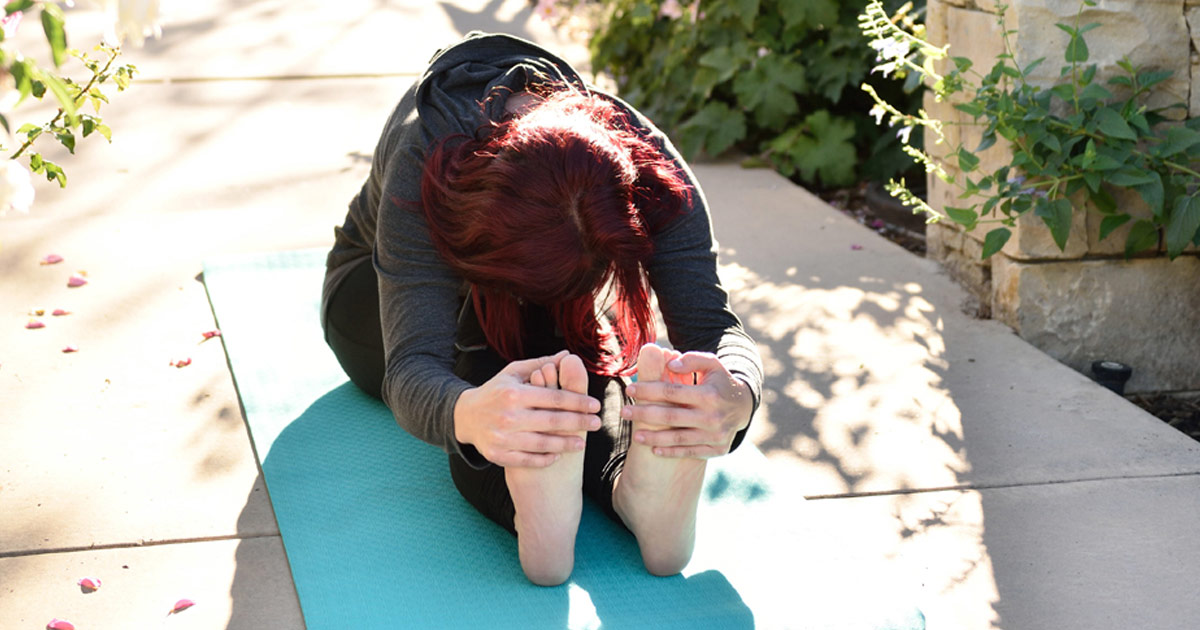
Patanjali’s Eight Limbs of Yoga provide a scaffolding for the comprehensive practice of yoga. As the third and fourth of Patanjali’s Eight Limbs of Yoga, asana (posture practice) and pranayama (breathing practice) create the bridge to the more internal, meditative practices of the fifth through eighth limbs.
In the yoga tradition, Hatha Yoga is the combination of posture practice and breathing practices. Linking body positions with breathing creates the “steady and comfortable” or “firm and soft” balance described in Sutra 2.46, one of the three sutras—out of 196 in all—that address asana practice.
In physiological terms, the combination of posture practice and breathing practice is designed to allow us to rest in the parasympathetic (rest-and-digest) side of our autonomic nervous systems. Resting in the parasympathetic nervous system creates the conditions most likely to allow the mind to come to rest.
When I studied with BKS Iyengar in Pune, India, he described the purpose of posture practice like this: Hatha Yoga practice creates a restful state in the body that is the perfect environment for a calm and spacious mind.
So, all of this is to say that all Hatha Yoga practice was originally intended to prepare our bodies and minds for meditation. When practiced with mindfulness and a non-competitive intention, all the basic asanas, combined with intentional breathing, can support meditation. A yoga sequence for meditation can include any asana that your body can practice with ease. Still, there are certain poses that help us sit more comfortably by relaxing particular muscles and their fascia, and by helping to still the mind.
Yoga Sequence for Meditation
- Adho Mukha Svanasana (Downward Facing Dog Pose): Downward Facing Dog Pose is a great warmup for practice. It’s a gentle inversion that strengthens and stretches the shoulders and hips, arms and legs. Feel free to move around and explore all your joints when you use this pose as a warmup.
- Talasana (Palm Tree Pose): Palm Tree Pose stretches your spine and torso laterally, which can help promote free breathing.
- Vrksasana (Tree Pose): Balance poses, in general, help us collect the mind. Because we have to concentrate to balance, we build the skill of concentration when we challenge our balance.
- Supported Matsyasana (Fish Pose): Supported Fish Pose helps reverse the pattern of too much sitting and bending over our devices. Of course, any backbend can be helpful for this, but active backbends are more stimulating to the nervous system. Supported Matsyasana relaxes us while it expands the front chest and shoulders.
- Jathara Parivrttanasana (Revolved Belly Pose): It’s important to include a twist in your meditation sequence. I chose Revolved Belly Pose here because, like Supported Matsyasana, it’s a relaxing twist. Also, in lying-down twists it is easier to maintain spinal integrity.
- Supta Ardha Padmasana (Supine Half-Lotus Pose): Supine Half-Lotus Pose safely stretches the outer thigh and gluteal muscles.
- Paschimottanasana (Seated Forward Bend): Forward bends not only lengthen the back body muscles, but they also calm the mind. They’re a great preparation for Savasana.
- Savasana (Relaxation Pose): Don’t skip or shortchange Savasana. It’s the culmination of the rest of your practice, and key to settling into your meditation practice with ease. Take at least 10 minutes, 15 or more if you can.
Throughout any yoga sequence for meditation, remember to keep your awareness inside your body. Breathe deeply and relax your body around your breath. Stay present with the ever-changing sensations arising in your body as it releases tension and effort. Keep a receptive, rather than aggressive, intention. Remember that practicing asana to support meditation is about turning your body into a harmonious environment for your mind.
If you want to develop your own yoga sequence for meditation, make sure you include poses that move your spine out of its central axis: flexion, extension, rotation and lateral bending. Also, move slowly so that your body has a chance to settle into each pose, and so that you can tune in mentally to the process of unfolding.
